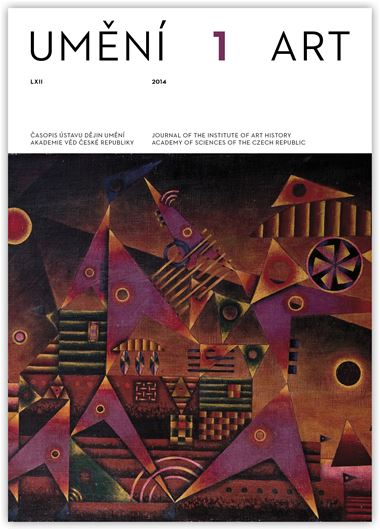Bronislava Rokytová
The Prague Intermezzo of the Painter and Photographer Hannes Beckmann (1934–1948): Dessau – Prague – New York
Hannes Beckmann (1909–1977) was one of the graduates from the Bauhaus of whom not very much has been known until now. The fate of this painter, photographer, set designer, and also theorist, is connected with Czechoslovakia, where he was forced to emigrate for political reasons in 1934. He was classified among the refugees from Nazism, whose lives had to adapt to the fluctuating dictates of the state authorities, influenced by the growing pressure from neighbouring Germany. In spite of all the difficulties he faced, being repeatedly forced to undergo a metamorphosis from a German citizen to a Czechoslovak one and back again, Beckmann created works with a clear outlook, focusing on geometrical and organic abstract works. The evident influence of Wassily Kandinsky and Paul Klee was something unusual for the Czech visual arts in the 1930s, and for a long time after Beckmann left Czechoslovakia he had no obvious followers there. The nearly fifteen years he spent in Czechoslovakia was not an entirely typical intermezzo in the life of this emigrant. Although he had to observe the state regulations for refugees and was dependent on the financial support of the family of his wife, who was of Czech origin, he continued to work without making any compromises. This can be seen from Beckmann’s visit to Wassily Kandinsky in Paris and from their correspondence, which lasted until 1939. His works were exhibited together with those of other Czech artists at the First Exhibition of Non-Associated Artists held in the exhibition centre of the Mánes Union of Fine Arts in Prague in 1936. He also published theoretical texts devoted to photography and set design in Prague German periodicals. He was arrested several times and interrogated about his photography, which was considered a suspicious activity. At the end of the war he was detained in a penal camp for versiebte Arier [degenerate Aryans], but all these seeming restrictions eventually benefited the artistic independence expressed in his work, culminating in the exhibition “Hannes Beckmann – Czechoslovak Citizen” at the Museum of Non-Objective Painting in New York, where he managed to re-settle in 1948.
Full-text in the Digital Library of the Czech Academy of Sciences:
https://kramerius.lib.cas.cz/uuid/uuid:cc02fa05-d2f5-4950-bc08-0907402e0d08
< back

